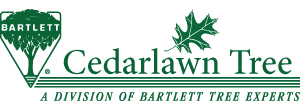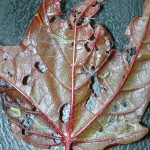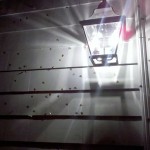Winter Moth’s are Upon Us
As spring approaches we once again need to be aware of significant tree-feeding damage potential due to winter moth caterpillars. This non-native insect pest first began causing tree damage in coastal MA and has continued its advancement further inland. It continues to move deeper into the MetroWest Boston area each year. The insect gets its name due to the life cycle of the insect as adult moths emerge from the ground in November. Female moths at this time lay eggs on susceptible host trees. These eggs hatch in early spring before the leaves emerge. The tiny caterpillars then begin searching for tree buds to crawl into and begin feeding. Caterpillars are “inchworm” like and are green with a white stripe on each side of there body. They grow to around 1 inch long by late May or so. Feeding damage ceases predominantly by early June at which time the insects drop to the ground and pupate, waiting to begin the life cycle all over again the following fall.
Significant leaf loss can occur on unmonitored trees because of the early season feeding. Leaf damage begins even before leaf emegence. As caterpillar size increases during May coinciding with leaf expansion, so does the resulting damage. Home owners, unaware of damage potential, often become first aware of feeding damage as they observe surrounding trees in full leaf while their trees are partially bare or devoid of foliage.
Are you at risk for damage this spring? Winter moth prefers certain types of trees. Particularly favored are crabapple /apples, maples, lindens, oaks, birches & cherries. Many other trees, however, can be fed upon. Additionally blueberries, along with other shrubs located under trees being fed upon, can also be damaged. The smaller the tree or shrub, the faster defoliation can occur. If you noticed holes in your leaves last year, felt thin “silk-like” strands on your face as you walked under trees last May (caterpillars move around trees by producing silk-like strands from which they suspend themselves and allow wind to relocate them), noticed a lot of moths around your outdoor lighting last November and/or are near an area that has had significant winter moth damage last year you have the potential for winter moth damage.
Trees can be sprayed with a product containing Spinosad. This is a biologically-derived product produced from a process of bacterial fermentation. It is similar to Bt (Bacillus thuringiensis) in use but is also capable of some control via direct spray application. It is considered a “reduced risk” pesticide. Trees are sprayed after bud-break. You may need 2 separate treatment visits if you have a mix of early-leafing, smaller trees such as crabapples and larger susceptible shade trees that leaf out after May 1st to prevent serious defoliation of smaller trees.






